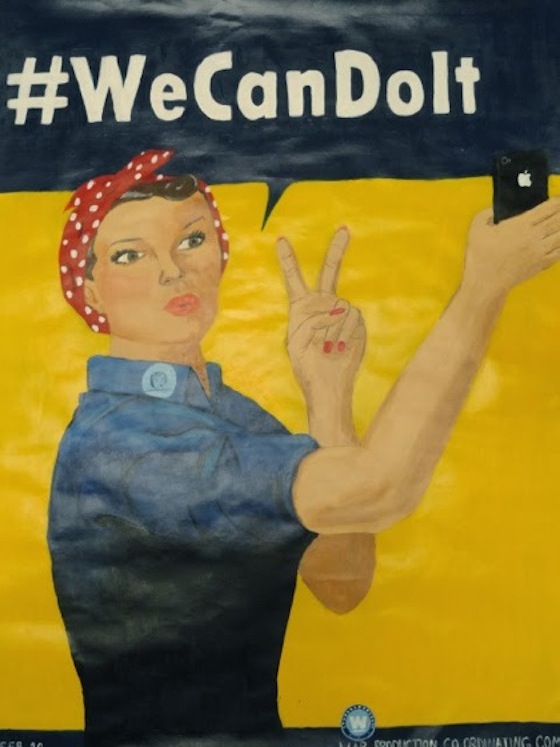 I was standing in a small art gallery in New Bern, NC staring at a six foot, paint splattered canvas. Thoughts ran through my head of Teri Horton and Jackson Pollock. I checked the back of the painting for fingerprints. Nope, not a Pollock. Simply a copy.
I was standing in a small art gallery in New Bern, NC staring at a six foot, paint splattered canvas. Thoughts ran through my head of Teri Horton and Jackson Pollock. I checked the back of the painting for fingerprints. Nope, not a Pollock. Simply a copy.
As teachers, we deal with the issue of copying all the time. Whether it’s the kid who wants to copy SpongeBob or the student who wants to draw a lion, we all entertain the issue of copyright infringement.
The question we must ask ourselves is when, if ever, is it appropriate to copy?
The issue of copying has been around since the beginning of time. Apprentices would copy works to learn from the hand of the master. In more recent times, Pop Artist like Lichtenstein have been accused of plagiarism. Shepard Fairey was sued by the Associated Press for using their Obama photo as the source for his “Hope” poster. Banksy might have said it best when he engraved these words in stone, “The bad artists imitate, the great artists steal.” Most would say he stole these words from Picasso. However, whether Picasso was the first to voice this expression is still open to debate. The point is, all artist copy, but when is it acceptable?
I decided to ask teachers what their thoughts are on this controversial topic are. Though this is not a scientific survey, it does represent the varying opinions of art teachers.
The most staunch opponents to the issue responded with a resounding, “No, not in my class!” Though many teachers might agree with a no copying policy, the question of what is considered copying comes into play.
More teachers are opposed to students drawing copyrighted characters like Pokemon, yet tend to be more lenient when it comes to drawing from a photograph. For example, if a student wanted to draw a zebra, it would be acceptable to acquire a photo from the Internet as a reference.
Some teachers insist that a student use at least three different references to create an original composition. What they may fail to see is that even though the composition is original, the images used are still copied.
Teachers that were more open to the idea of students copying work cited the following reasons. First, a student that is not confident in his or her ability to draw, might find solace in copying a simpler image. The success achieved from copying the familiar might be the affirmation that propels the student along in art.

Another reason that seemed universally accepted was in the case of parody or intertextuality. In these advanced situations, using previously created imagery is not only accepted, it’s necessary for the success of the piece.
Throughout the history of art, copying has been a constant and controversial subject. It certainly is a topic in art that is not quickly dismissed.
Do you allow your students to copy? Why or why not?
Do you have different rules when it comes to copying different things? For example a Disney character vs a reference photo?
Magazine articles and podcasts are opinions of professional education contributors and do not necessarily represent the position of the Art of Education University (AOEU) or its academic offerings. Contributors use terms in the way they are most often talked about in the scope of their educational experiences.




